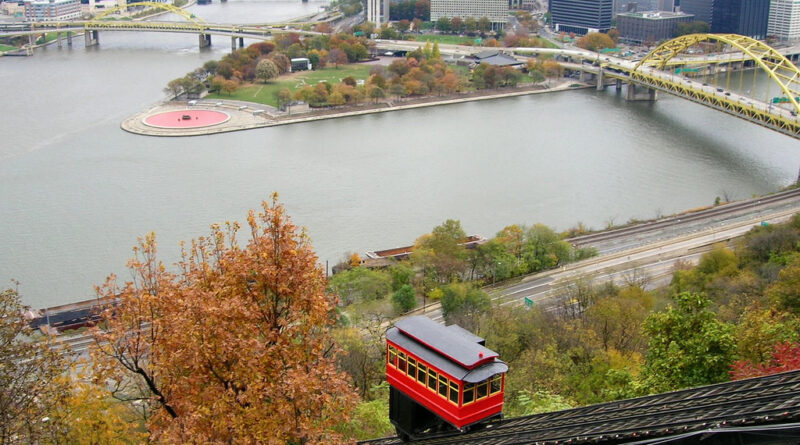Duquesne Incline in Pittsburgh Pennsylvania
Perched atop Mount Washington, the Duquesne Incline stands as a beloved icon of Pittsburgh, a living testament to the city’s rich industrial heritage and a gateway to breathtaking panoramic views. This historic cable car system, which has been transporting passengers up and down the steep slopes of the Monongahela River’s south shore since 1877, is more than just a mode of transportation – it’s a cherished piece of Pittsburgh’s history and a quintessential part of the city’s identity.
The origins of the Duquesne Incline can be traced back to the late 19th century when Pittsburgh was emerging as a burgeoning industrial powerhouse. As the city’s population grew and industry flourished, the need for efficient transportation between the hilltops and the river valley became increasingly apparent. Enter the inclined plane railway, a ingenious solution that allowed residents and workers to commute between their homes on the hilltops and the mills and factories along the riverbanks.
The Duquesne Incline was one of several inclined railways constructed during this period, with its inaugural trip taking place on May 20, 1877. Designed by Samuel Diescher, a German-born engineer, the incline featured two cable cars connected by a single cable, ensuring a safe and efficient operation. As one car ascended the steep 794-foot-long track, the other would descend, providing a counterbalance and minimizing the need for excessive power.
From its inception, the Duquesne Incline played a vital role in the daily lives of Pittsburgh’s residents and workers. Thousands of commuters relied on the incline to travel between their homes and workplaces, saving valuable time and energy compared to the arduous trek up and down the steep hillsides. The cable cars became a familiar sight, their distinctive red and white colors and distinctive rumble echoing through the streets below.
Over the decades, the Duquesne Incline has undergone numerous renovations and upgrades to ensure its continued operation and safety. In the early 1960s, the original cable cars were replaced with more modern and spacious vehicles, providing a smoother and more comfortable ride for passengers. Despite these improvements, the incline’s historic charm and character have remained intact, with its iconic upper and lower stations serving as gateways to a bygone era.
Today, the Duquesne Incline is not only a vital mode of transportation but also a beloved tourist attraction, drawing visitors from around the world to experience the thrill of ascending or descending the steep slope and taking in the breathtaking views of Pittsburgh’s skyline and the three rivers that converge at its heart. As the cable cars make their leisurely journey up the incline, passengers are treated to a panoramic vista that captures the essence of the Steel City, from the towering skyscrapers to the iconic bridges that span the rivers.
Beyond its stunning vistas, the Duquesne Incline offers a unique glimpse into Pittsburgh’s industrial heritage. The incline’s machinery room, housed in the upper station, showcases the intricate mechanics and engineering that have kept the system running for over a century. Visitors can marvel at the massive cables, pulleys, and gears that power the cable cars, gaining an appreciation for the ingenuity and craftsmanship that went into this historic marvel.
As Pittsburgh continues to evolve and embrace its future, the Duquesne Incline remains a cherished link to the city’s past, a living museum that celebrates the resilience and resourcefulness of its people. Whether you’re a lifelong resident or a first-time visitor, a ride on the Duquesne Incline promises an unforgettable experience, a journey through time and a celebration of Pittsburgh’s enduring spirit.
Discover more from City Towner
Subscribe to get the latest posts sent to your email.




